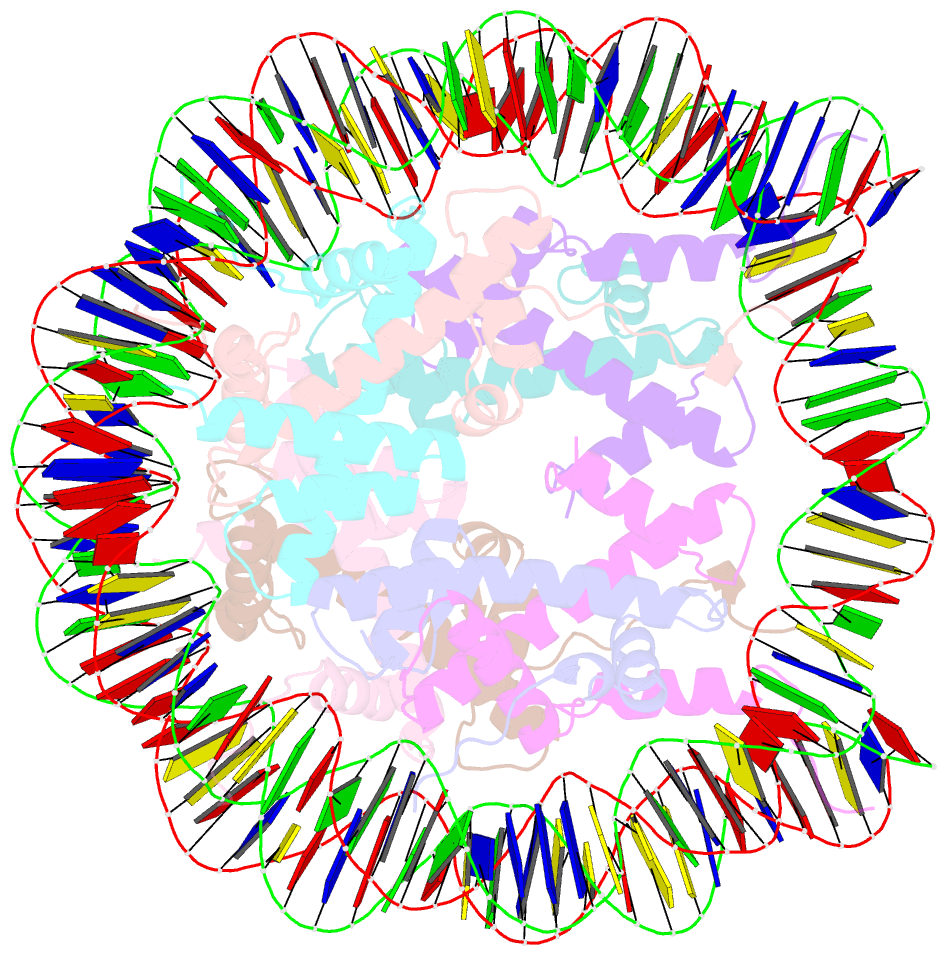Summary information and primary citation
- PDB-id
- 3mgs; SNAP-derived features in text and JSON formats;
DNAproDB
- Class
- structural protein-DNA
- Method
- X-ray (3.15 Å)
- Summary
- Binding of cesium ions to the nucleosome core particle
- Reference
- Mohideen K, Muhammad R, Davey CA (2010): "Perturbations in nucleosome structure from heavy metal association." Nucleic Acids Res. doi: 10.1093/nar/gkq420.
- Abstract
- Heavy metals have the potential to engage in strong bonding interactions and can thus function in essential as well as toxic or therapeutic capacities. We conducted crystallographic analyses of heavy cation binding to the nucleosome core particle and found that Co(2+) and Ni(2+) preferentially associate with the DNA major groove, in a sequence- and conformation-dependent manner. Conversely, Rb(+) and Cs(+) are found to bind only opportunistically to minor groove elements of the DNA, in particular at narrow AT dinucleotide sites. Furthermore, relative to Mn(2+) the aggressive coordination of Co(2+) and Ni(2+) to guanine bases is observed to induce a shift in histone-DNA register around the nucleosome center by stabilizing DNA stretching over one region accompanied by expulsion of two bases at an opposing location. These 'softer' transition metals also associate with multiple histone protein sites, including inter-nucleosomal cross-linking, and display a proclivity for coordination to histidine. Sustained binding and the ability to induce structural perturbations at specific locations in the nucleosome may contribute to genetic and epigenetic mechanisms of carcinogenesis mediated by Co(2+) and Ni(2+).





